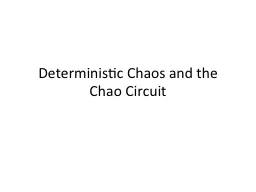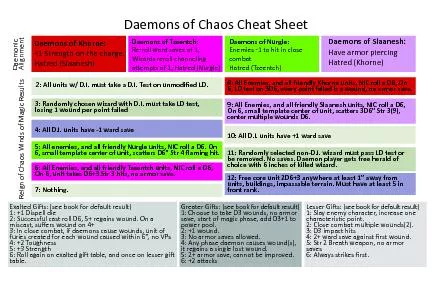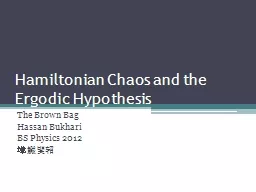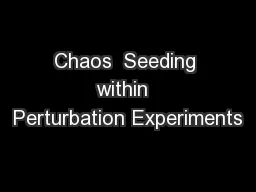PPT-Introduction to Chaos
Author : trish-goza | Published Date : 2017-07-14
by Saeed Heidary 29 Feb 2013 Outline Chaos in Deterministic Dynamical systems Sensitivity to initial conditions Lyapunov exponent Fractal geometry Chaotic time
Presentation Embed Code
Download Presentation
Download Presentation The PPT/PDF document "Introduction to Chaos" is the property of its rightful owner. Permission is granted to download and print the materials on this website for personal, non-commercial use only, and to display it on your personal computer provided you do not modify the materials and that you retain all copyright notices contained in the materials. By downloading content from our website, you accept the terms of this agreement.
Introduction to Chaos: Transcript
Download Rules Of Document
"Introduction to Chaos"The content belongs to its owner. You may download and print it for personal use, without modification, and keep all copyright notices. By downloading, you agree to these terms.
Related Documents














